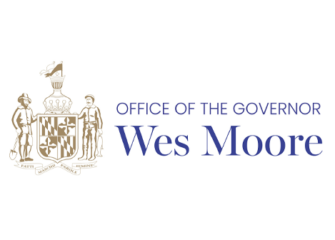
Federal Job Losses are Real
Federal government jobs have, historically speaking, accounted for about five or six percent of all Maryland-based employment. That’s the highest share of any state, and three times above the national average. This well-known fact fueled fears that the current presidential administration’s efforts to reduce the federal workforce would disproportionately harm Maryland.
As of the middle of 2025, those fears have proven to be justified.
Statewide federal government employment stood at an all-time high of 163,100 jobs in January 2025. February saw Maryland lose 700 of those federal jobs. Then 2,600 went away in March, followed by another decline of 2,600 jobs in April. Losses accelerated in May 2025 (the most recent month of available data), with the state shedding yet another 3,200 federal government jobs.
That equates to 9,100 fewer federal government jobs over just a four month span, a 5.6 percent decline. This dwarfs the nationwide decline in nationwide federal employment, which has fallen by just 2.1% since the January 2025 peak.
While DOGE’s efforts have slowed, Maryland’s federal job losses will likely continue – and quite possibly accelerate – in the months to come. The FBI recently announced that its new headquarters would be moving to Washington, D.C. instead of Greenbelt. Then on July 8th, the Supreme Court issued an emergency stay lifting a lower court’s injunction that blocked executive branch efforts to substantially reduce the federal workforce.
While this legal battle is far from settled, the administration’s efforts to cut federal jobs, as well as a lack of new federal jobs, will continue to negatively affect Maryland’s job base over the next several quarters.
Grant and Funding Cuts Also Contribute to Job losses
While it’s more difficult to identify the exact impact of DOGE-related funding cuts and grant cancellations on Maryland’s employment base, there’s some evidence of emerging job losses. Employment in Maryland’s private education sector has fallen by 1,300 positions over the first five months of the year, while the scientific research and development services and scientific and technical consulting subsectors have lost a combined 1,300 jobs over the past year (that data is not seasonally adjusted so needs to be compared on a year-over-year basis).
The loss of 2,600 jobs is not in and of itself a particular cause for concern, at least with regards to the state’s economic health. The trend signified by these losses, however, is. Funding cuts and grant cancellations will likely continue to contribute to job losses, adding to the state’s economic woes.
State Government hiring a Suboptimal Stopgap
The Maryland state government has been adding jobs at a strong pace over the past several years, with a particularly rapid 7.2% increase in the state government workforce just over the past year. That equates to 8,400 new jobs, or one-third of all statewide job growth over the past year.
That hiring may bolster the state’s economic situation – or appear to, at least – but it also means that the private and federal employment base is supporting a proportionally larger state payroll. That’s particularly suboptimal given that the state faced a $3 billion budget deficit in fiscal year 2026 due to weaker-than-expected income and sales tax collections.
In Desperate Need of Momentum
Maryland’s private sector has added just 22,000 jobs over the past year, nearly all of which were in just four sectors: healthcare, which is noncyclical (i.e., it’s unaffected by broader economic conditions), financial activities, which remains well below pre-pandemic levels, and retail trade and leisure and hospitality, neither of which is known for producing particularly stable or high paying employment opportunities.
Outside of those four sectors, there are few reasons for optimism regarding Maryland’s private sector market outlook. Construction employment is flat. Manufacturing and professional business services have lost jobs over the past year, and information (think tech and media) has hemorrhaged jobs over the past year.
Despite Weak Labor Demand, Labor Supply Somehow still an Issue
A weak job market – a totally fair characterization of Maryland’s, at the moment – usually results in rising unemployment. And while that has been the case in Maryland, with the rate rising from a low of 1.9% in the middle of 2023 to 3.2% in May 2025, that is: 1) still an absurdly low level of unemployment, about one percentage point below the national average, 2) unchanged from October of 2024, and 3) signifies that workers are still extremely hard to find in the Free State.
Put another way, even if Maryland-based employers really wanted to hire, there simply aren’t enough workers to fuel job growth. The state’s labor force has lost about 13,000 people over the past year and is 131,000 persons smaller than at the start of 2020. As a result, Maryland’s labor force participation rate has fallen to 64.8%, matching the lowest level since the mid-1970s.
All of which is to say, the state’s already difficult fiscal math won’t get easier anytime soon. I95
.jpg) Zachary Fritz is the chief operating officer of Sage Policy Group, an economic and policy consulting firm in Baltimore, MD.
Zachary Fritz is the chief operating officer of Sage Policy Group, an economic and policy consulting firm in Baltimore, MD.



